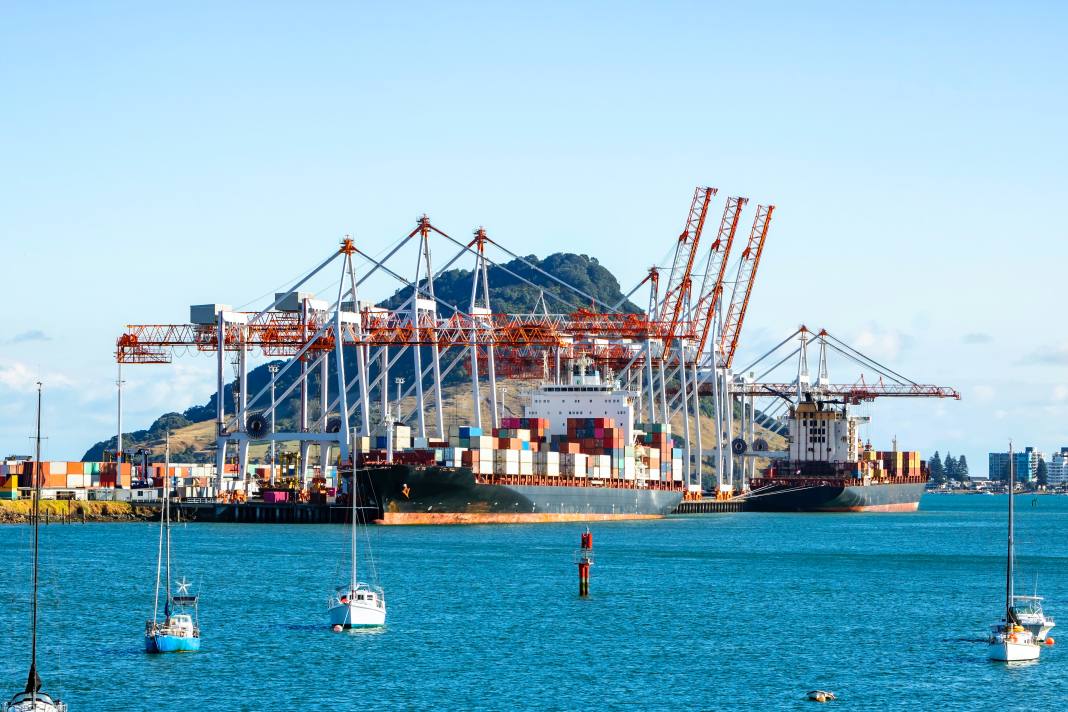Given the unprecedented year the Bay business community has been through and the problems that are still affecting us globally as a result of the Covid-19 pandemic, it is too early to make a call on the economic outlook for 2021.
Despite New Zealand’s strong exports, and generally improving business confidence, issues such as shipping logistics and construction log jams may well prove problematic in the next few months.
While things have been going well in the last few months, we should be wary of a depressed global economy, supply chain disruption and the prospect – albeit diminishing – of further lockdowns pre-vaccine.– Nigel Tutt
But it does seem that the country has managed to come out of the first year of Covid-19 and the initial lockdowns rather better than might have been the case.
Nigel Tutt, chief executive of Priority One, commenting just before the Western Bay economic development agency’s annual general meeting, noted that the economy had bounced back well from the lockdowns, with indicators pointing towards at this stage towards a sharp “V” shaped recession.
“Unemployment has moved up, but so far not to the levels that would cause distress in the community,” he said.
“We’d expect it may drift up a little in early 2021 as the disruption to some sectors causes a shift in employment.”
But the outlook for 2021 remained uncertain, said Tutt.
“While things have been going well in the last few months, we should be wary of a depressed global economy, supply chain disruption and the prospect – albeit diminishing – of further lockdowns pre-vaccine.”
Cautious optimism
Simon Clarke, who took over the chairmanship of Priority One at the AGM from Brett Hewlett – who resigned the position after five years – said he remained cautiously optimistic that the Western Bay economy would continue its strong bounce back in 2021.
“However, pre-Covid-19 issues around housing unaffordability, environmental degradation, infrastructure deficiencies and increasing social inequality in our community, have not gone away,” said Clarke.
“If anything, those issues have been magnified and laid bare for all to see throughout 2020.
In 2021, we need to focus on accelerating our recovery by ensuring that we continue to grow intelligently and sustainably, and we need to focus on improving outcomes socially, environment and culturally. Not just economically – we want quality growth.”
Pre-Covid-19 issues around housing unaffordability, environmental degradation, infrastructure deficiencies and increasing social inequality in our community, have not gone away. – Simon Clarke
An eventful year
In their general comments on the year in the AGM report, Tutt and outgoing chair Hewlett, noted that 2019/20 year had been one of the more eventful in Priority One’s history.
“During this period we have moved from an economy that was growing at a swift pace, with low unemployment, to seeing the extremely disruptive effects of the Covid-19 pandemic and lockdown, with businesses in distress, then finally moving onto the path of a strong recovery.”
The Priority One leaders said they were pleased to report that economic activity, measured through retail spend and heavy vehicle movements, had returned to normal levels, and unemployment increases that have been modest.
“In many cases New Zealand has positively outperformed the dim expectations of late March/April. We see the Western BOP as performing a couple of percentage points ahead of the country.”
The Western Bay would come out of the pandemic in good shape for a number of reasons, they said, noting: Our strong growth coming into the downturn was able to carry us through, many businesses came back from lockdown with strong pipelines and customers.
Our export sector, led by kiwifruit, honey and manufacturers, has fared well in global markets.
We have a diversified economy for regional New Zealand, with relatively low exposure to international tourism and travel.
Strong population growth has continued, fuelling some of this economic growth. We expect to remain an attractive destination in the future, highlighting the need to plan accordingly.
But despite the local economy coming through the pandemic well, it did not mask some of the challenges ahead. While the Western Bay’s growth has traditionally been strong, they said:
Our incomes are lower than the New Zealand average and many other cities. Our rapid population growth has outstripped infrastructure and land availability.
Our housing market is in crisis, with the worst housing and rental affordability of any major New Zealand city.
We have Māori employment outcomes that are generally worse than the rest of the population.
The pandemic had accelerated the income inequality that we were already seeing (with younger and lower skilled jobs more susceptible) and wealth inequality, with rising house and rental prices.
“In addition to this we must do more to ensure that our economy is more environmentally and socially sustainable in the future,” said Tutt and Hewlett.
“Our strategy to accelerate economic development in the Western BOP seeks to address these points alongside taking the opportunities in front of us.”
Strategy for growth
Tutt and Hewlett – who worked closely with incoming chair Clarke on the strategy for the coming year – said it had a joint value and growth approach.
“Firstly we must accelerate our developing regional innovation ecosystem so that we can build more value into our economy, create higher value employment and take advantage of international opportunities,” they said.
“We have a cluster of innovative businesses that has potential to grow. We must harness the opportunity in our Māori community, with a growing and youthful workforce, land holdings and momentum.
“At the same time, we must take a step change in how we grow as a region, growth must take place in a more intelligent way, to do this we need to change the equation for better results.”
Priority One believes this will require greater partnership between business and government (local, regional and central) to provide the region with the planning and resources to keep growing in a sustainable manner.
“Having a strong economic strategy in partnership with government is a key enabling factor.”




